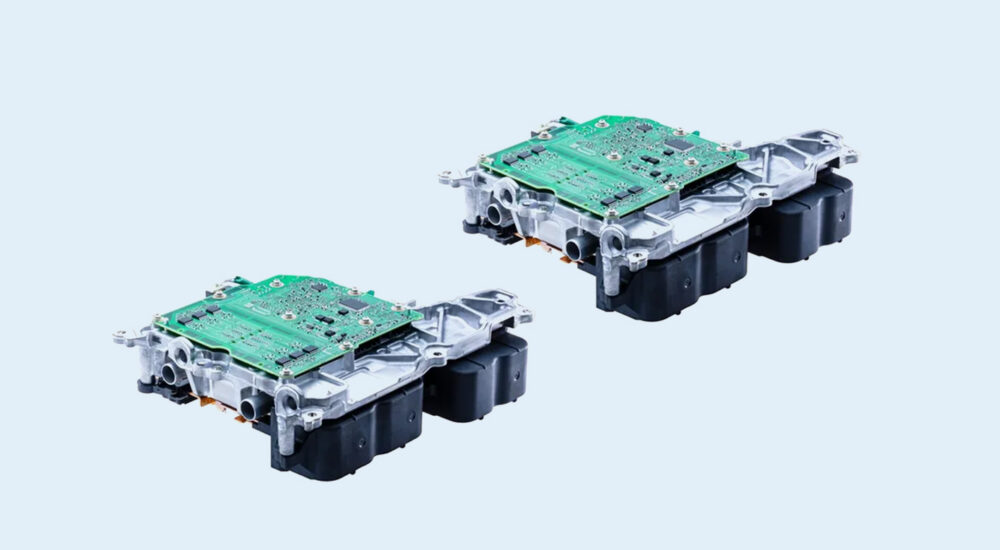Driving Efficiency: Exploring the Growth of the SiC Power Semiconductor Market
- Get link
- X
- Other Apps
As industries strive for higher energy efficiency, sustainability, and compactness in electronic systems, the SiC power semiconductor market has emerged as a critical enabler. Silicon Carbide (SiC), a compound of silicon and carbon, is a next-generation semiconductor material that offers significant advantages over traditional silicon-based power devices. From electric vehicles to renewable energy systems and industrial power supplies, SiC semiconductors are driving major transformations in power electronics.

Understanding SiC Power Semiconductors
Silicon carbide power semiconductors are designed to handle high voltages, high temperatures, and high frequencies better than traditional silicon components. These characteristics make SiC devices especially suitable for applications requiring superior energy efficiency, power density, and thermal performance.
Compared to their silicon counterparts, SiC power devices have:
Higher breakdown voltage
Lower on-resistance
Better thermal conductivity
Faster switching speeds
Lower energy losses
These benefits are crucial in high-performance systems where minimizing power loss and improving reliability are top priorities.
Market Overview
The SiC power semiconductor market has gained momentum due to rising demand for efficient power conversion in various sectors. The global market is projected to grow rapidly over the next decade, driven by applications in electric vehicles (EVs), 5G base stations, smart grids, photovoltaic inverters, and rail transportation systems.
Governments and industries worldwide are pushing toward energy-efficient technologies and low-emission solutions, which has accelerated the adoption of SiC-based devices. Furthermore, as electrification increases across sectors, the need for compact, lightweight, and high-efficiency power modules is becoming increasingly urgent.
Key Drivers of the SiC Power Semiconductor Market
1. Electric Vehicles (EVs)
The adoption of electric vehicles is one of the primary growth drivers for the SiC power semiconductor market. SiC MOSFETs and diodes help increase battery range, reduce energy losses, and enable smaller and lighter powertrain components. Leading EV manufacturers are transitioning to SiC to gain performance advantages and improve energy efficiency.
2. Renewable Energy Integration
SiC power semiconductors are ideal for solar and wind energy systems where efficient energy conversion is vital. Inverters and converters built with SiC can operate at higher temperatures and voltages, resulting in more reliable and compact systems that reduce energy losses in renewable infrastructure.
3. Industrial Automation
In factory automation, motor drives, and robotics, SiC devices help reduce switching losses and improve the efficiency of high-frequency power supplies. This leads to lower operational costs and higher productivity, which is essential for competitive manufacturing environments.
4. Telecommunication and Data Centers
As 5G networks and cloud services expand, data centers are under pressure to improve energy efficiency. SiC semiconductors support high-efficiency power delivery systems, reduce cooling needs, and optimize the performance of power supplies in data centers and base stations.
5. Rail and Aerospace Applications
In sectors like rail transportation and aerospace, SiC’s high-temperature and high-voltage capabilities allow for lighter, more compact systems that meet stringent performance and reliability requirements.
Market Segmentation
The SiC power semiconductor market is segmented by:
Device Type: SiC MOSFETs, SiC Schottky Diodes, Hybrid Modules
Voltage Range: Less than 1kV, 1kV–3kV, and above 3kV
Application: Automotive, energy & power, industrial, aerospace, and telecommunication
Region: North America, Europe, Asia-Pacific, Latin America, Middle East, and Africa
Asia-Pacific currently holds the largest market share due to the dominance of EV and electronics manufacturing in countries like China, Japan, and South Korea. However, North America and Europe are witnessing rapid growth due to strong investments in green energy and automotive innovation.
Challenges and Limitations
Despite its potential, the SiC power semiconductor market faces several challenges:
High Production Cost: Manufacturing SiC wafers and devices is more complex and expensive than traditional silicon, limiting adoption in cost-sensitive applications.
Limited Supply Chain: The supply of high-quality SiC substrates is limited and concentrated among a few players, leading to supply chain risks.
Design Complexity: Engineers and manufacturers must redesign circuits and systems to optimize SiC device performance, which requires time and resources.
Reliability Testing: Ensuring long-term reliability of SiC devices in critical systems is an ongoing area of focus and development.
However, with continuous R&D investments and economies of scale, these challenges are expected to be mitigated in the coming years.
Key Market Players
The competitive landscape of the SiC power semiconductor market includes a mix of established semiconductor companies and niche specialists. Major players include:
Wolfspeed (a Cree company)
STMicroelectronics
Infineon Technologies AG
ROHM Semiconductor
ON Semiconductor
Mitsubishi Electric Corporation
Littelfuse Inc.
Microchip Technology Inc.
GeneSiC Semiconductor
II-VI Incorporated
These companies are investing in expanding wafer production, developing new device architectures, and forming partnerships with automotive and industrial players.
Future Trends
Looking ahead, several trends are shaping the future of the SiC power semiconductor market:
6-inch and 8-inch SiC Wafer Development: Transitioning to larger wafer sizes will reduce costs and increase device availability.
Integration with GaN: Combined use of GaN and SiC could offer complementary advantages for various power applications.
Vertical Integration: Companies are moving toward vertical integration to control the entire value chain from raw materials to finished modules.
Expansion in Consumer Electronics: As SiC costs decrease, new applications in consumer appliances and portable electronics may emerge.
Conclusion
The SiC power semiconductor market is set to revolutionize power electronics by enabling higher efficiency, reliability, and compactness across a wide range of industries. While challenges remain, the benefits of SiC technology are driving its adoption at an accelerating pace. As the demand for clean energy, electric mobility, and smart systems grows globally, SiC semiconductors will play a critical role in powering the future.
Companies, engineers, and investors who align with this trend early will have the opportunity to lead in a rapidly transforming global market.
Related Trending Topics
| Warehouse Robotics Market |
| Smart Transportation Market |
| Audio Amplifier Market |
| Silicon-on-Insulator (SOI) Market |
| Industrial Control Systems (ICS) Market |
- Get link
- X
- Other Apps
Comments
Post a Comment